I was contacted by the owner of this little Clifton Apple to see if I could get the pipe into smoking shape again. I asked the piper to send me the patient and when it arrived I took the following set of pics to record its initial condition.
As you can see, the briar stummel looked to be in very nice shape, with just a few tiny nicks and scrapes around the edges of the bowl rim. The stem was deeply oxidized a sickly yellow-green colour along most of its length, with the exception of a thin band of darker vulcanite where the stem had been protected from the sun by the wood of a pipe rack. There were also a few tooth marks to contend with at the bit. Refreshingly, the owner had cleaned the pipe before sending it to me so I could get straight on with the repairs.


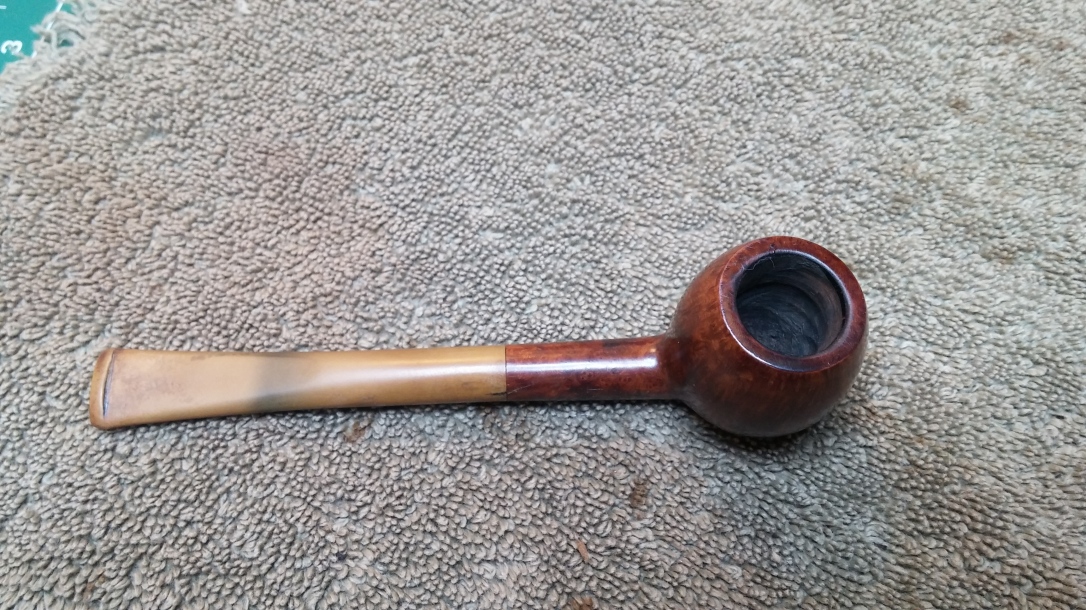



The issues above are mainly cosmetic problems; there was, however, one structural issue to contend with – a short crack in the shank along the right side, stretching diagonally from the shank face, up and over the stamps on the left flank.

After taking a closer look at the tobacco chamber, I also found evidence of some fairly brutal reaming – the walls of the chamber were scratched and misshapen, with significant ridging left by a knife point.
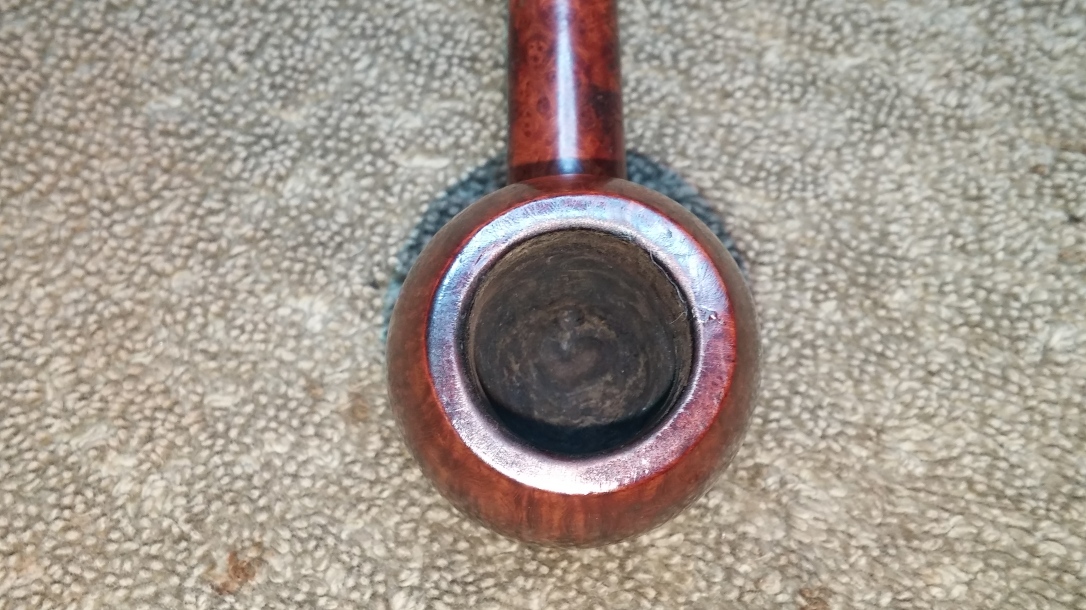
The pipe is stamped on the left flank “Clifton” in script over “Deluxe” in block letters. The left flank of the stem is also marked “Clifton”, again in block letters. The right flank of the stummel is stamped “Made in” over “ England” followed by a shape numer, “132”.
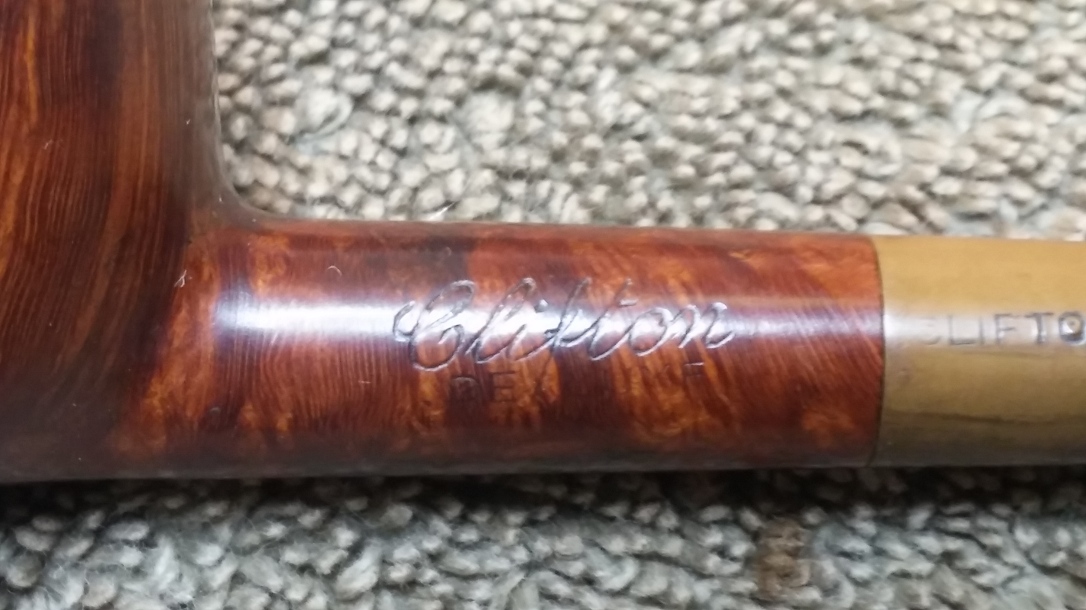



Pipephil.eu identifies Clifton as a brand of the Hall & Fitzgerald company. Tidbits of information gleaned from the Googleverse provide a very basic background to the company. Hall & Fitzgerald was based in Bristol, England, established as early as the late 1800s and operating until at least the 1960s after a hiatus caused by World War II. According to a post on the PipesMagazine forum, the Clifton brand first appeared in the early 1930s on H&F’s Clifton Deluxe pipe. The pipe in my worktable is certainly aged briar, but I don;t know whether it hails from this early production period or from a later date.
I decided to start my cleanup on this Apple by smoothing out the damage done to the chamber walls. I started with my Castleford reamer, gently removing the small amount of carbon cake and flattening the higher knife-cut ridges in the chamber walls. I followed the reamer with 80-grit sandpaper wrapped around a Sharpie marker to sand out the worst of the damage without substantially altering the factory lines of the bowl.

Moving on to the other major structural issue, I mounted a micro drill bit into my power drill and drilled a stopper hole at the end of the shank crack to stop it from stretching further towards the bowl. I then patched over the hole and the crack with CA glue to seal everything up. I didn’t bother with briar dust this time as I knew the shank band I was fitting would cover the stopper hole and crack once installed.


The pics for these next stages of the refurbishment have gone AWOL, unfortunately, but the banding went without hitch. I selected a suitable band from my stocks, fit it onto the end of the shank and then heated the band over my heat gun to expand the metal sufficiently to allow me to push the band all the way onto the shank. A wipe of alcohol on a cotton pad cleaned up the exterior of the briar, and a final wipe with mineral oil refreshed the wood, now ready for buffing.
While all of this activity was going on, the oxidized stem had been soaking in a bath of Oxyclean and warm water. I pulled the stem from its soak and scrubbed away the now soft oxidation with 0000 steel wool and a piece of Magic Eraser pad.
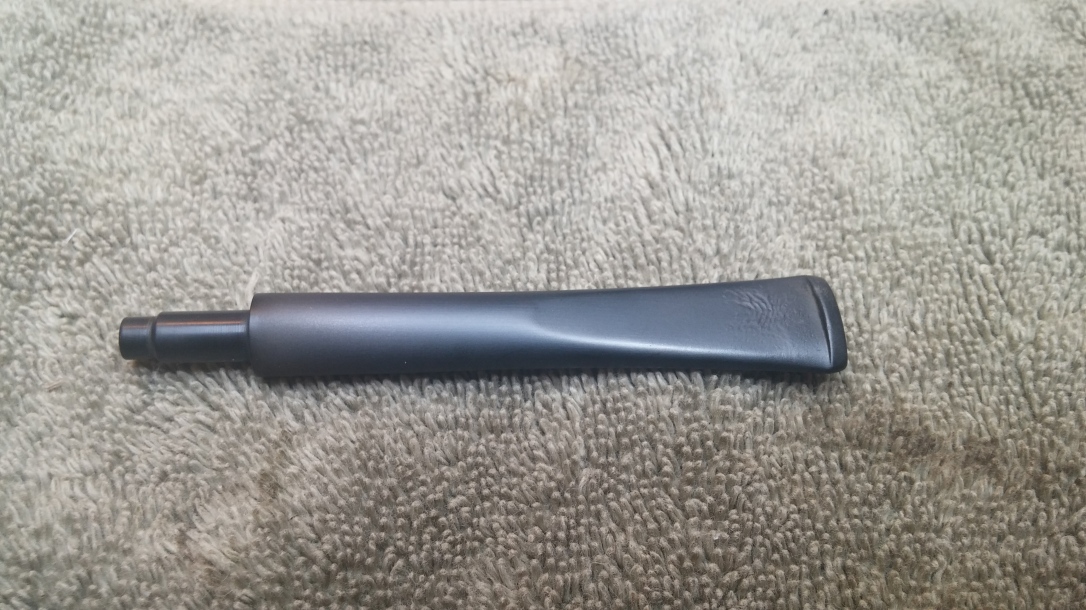
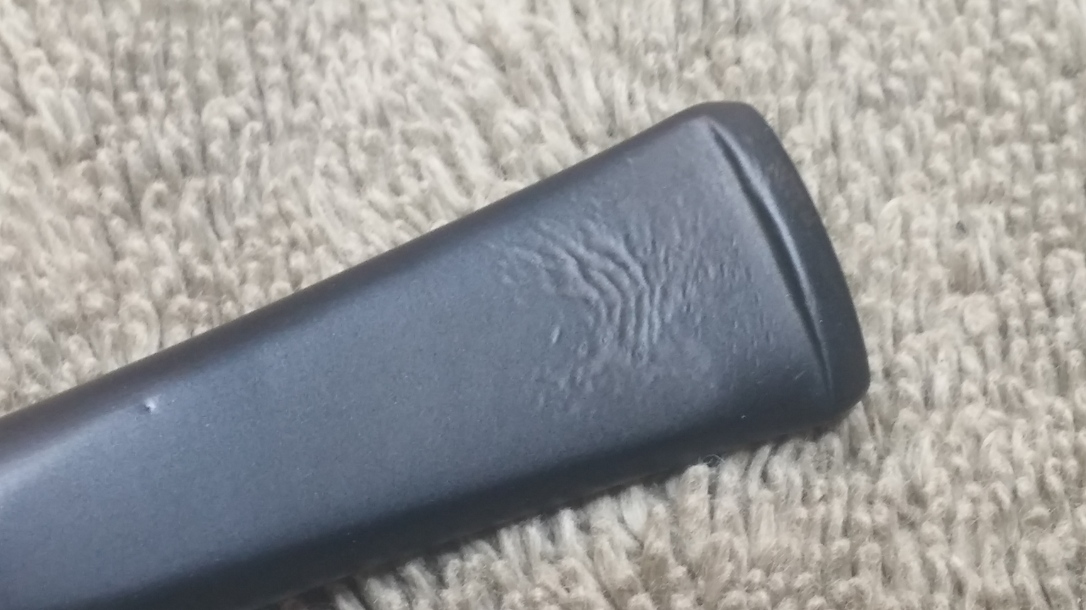

I smoothed out the tooth dents with a bit of 220-grit sand paper and then worked through my regular sequence of abrasives (320 to 2000grit) to smooth and polish the now clean vulcanite. I refreshed the Clifton logo on the stem with white acrylic paint, though as you will see in the finished pics, I was only partially successful – the logo had worn unevenly, so not all the letters took the paint.
At this point, I took the pipe to the buffer for a run of White Diamond compound and several coats of Carnauba wax. The smooth finish took to the wheel like a duck to water, I’m pleased to say, and the little Apple was soon looking smart.
This was a reasonably quick and easy refurbishment compared to some the estate pipes that cross my worktable, but I’m always impressed by the difference even this little bit of care and attention makes to a pipe. This Clifton Apple went from sad and abandoned to a rather elegant looking classic English smoking companion in only a few hours. It is now back with its owner, who reported back to share his enthusiasm for the refreshed briar.
Thanks for joining me for another restoration. Until next time, Happy Piping!
Here’s the finished pipe.











A fine looking pipe, Charles. Yesterday I brought an old S&R estate pipe back to life. Perhaps I’ll find the nerve to post my amateur repair. I borrowed a few of your techniques. 👍
LikeLiked by 1 person
Thanks David. I’d love to see your restoration!
LikeLike